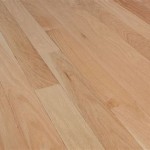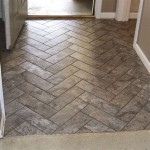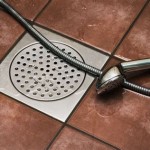Before and After Hardwood Floor Refinishing
Hardwood floors have long been regarded as a sought-after and classic flooring choice, adding warmth and elegance to any room. However, over time, even the most well-maintained hardwood floors can show signs of wear, such as scratches, dents, or discoloration. Refinishing your hardwood floors is a fantastic solution to restore their former glory and enhance the beauty of your home. This article provides a comprehensive guide to the process of hardwood floor refinishing, highlighting the key steps involved and the transformative results you can expect.
Step 1: Preparation
The first step of hardwood floor refinishing is thorough preparation. This involves clearing the floor of all furniture, rugs, and other objects. Next, the edges of the floor along walls and baseboards are sanded down using an edge sander to create a smooth transition. Any nails or screws that protrude from the floor are hammered down flush.
Step 2: Sanding
Sanding is a crucial stage in hardwood floor refinishing. It removes the top layer of the floor, which has accumulated dirt, grime, and scratches over time. A drum sander is used to sand the main areas of the floor, while an edger is utilized for corners and edges. Multiple passes with different grits of sandpaper are made to progressively remove old finishes and level the surface.
Step 3: Cleaning and Inspection
After sanding, the floor is thoroughly cleaned to remove all dust and debris. A vacuum cleaner and tack cloths are used to ensure the floor is immaculate before applying the new finish. This step is crucial for a smooth and even finish.
Step 4: Staining (Optional)
If desired, you can stain the hardwood floor to achieve a specific color or tone. Oil-based or water-based stains are applied and allowed to penetrate the wood according to the manufacturer's instructions. Staining allows you to customize the look of your floor and enhance its natural beauty.
Step 5: Applying Finish
The final stage of hardwood floor refinishing involves applying a protective finish. Polyurethane is a popular choice, available in a range of sheens from matte to glossy. The finish is applied in multiple thin coats, with sanding between coats to ensure a smooth and durable surface.
Results of Refinishing
Once the refinishing process is complete, the results are truly transformative. Here are some of the noticeable changes you can expect:
- Restored Beauty: Refinishing removes years of wear and tear, revealing the natural beauty of the hardwood beneath.
- Improved Durability: The new finish acts as a protective layer, shielding the floor from scratches, dents, and spills.
- Enhanced Value: Refinishing hardwood floors is an investment that can significantly increase the value of your home.
- Customizable Look: Staining options allow you to tailor the floor's appearance to your personal style and complement other elements of your home's décor.
Conclusion
Hardwood floor refinishing is a meticulous process that requires professional expertise and attention to detail. By entrusting this task to experienced professionals, you can revitalize and transform your hardwood floors, restoring their original beauty and enhancing the value of your home.

Hardwood Floor Refinishing And Everything You Need To Know At Home With The Barkers

Non Sandable Floor Refinishing N Hance

Refinishing Old Thin Hardwood Floors Lemon Thistle

Hardwood Floors After A Clean Screen And Recoat

Hardwood Floor Refinishing Restoration N Hance Wood

Finding And Restoring Original Hardwood Wandering With Le

My Diy Refinished Hardwood Floors Are Finished Addicted 2 Decorating

Refinishing Our Hardwood Floors Before After Young House Love

Insane Maple Floor Transformation Full Refinish

Hardwood Floor Refinishing In Dallas Fort Worth Free Quotes








